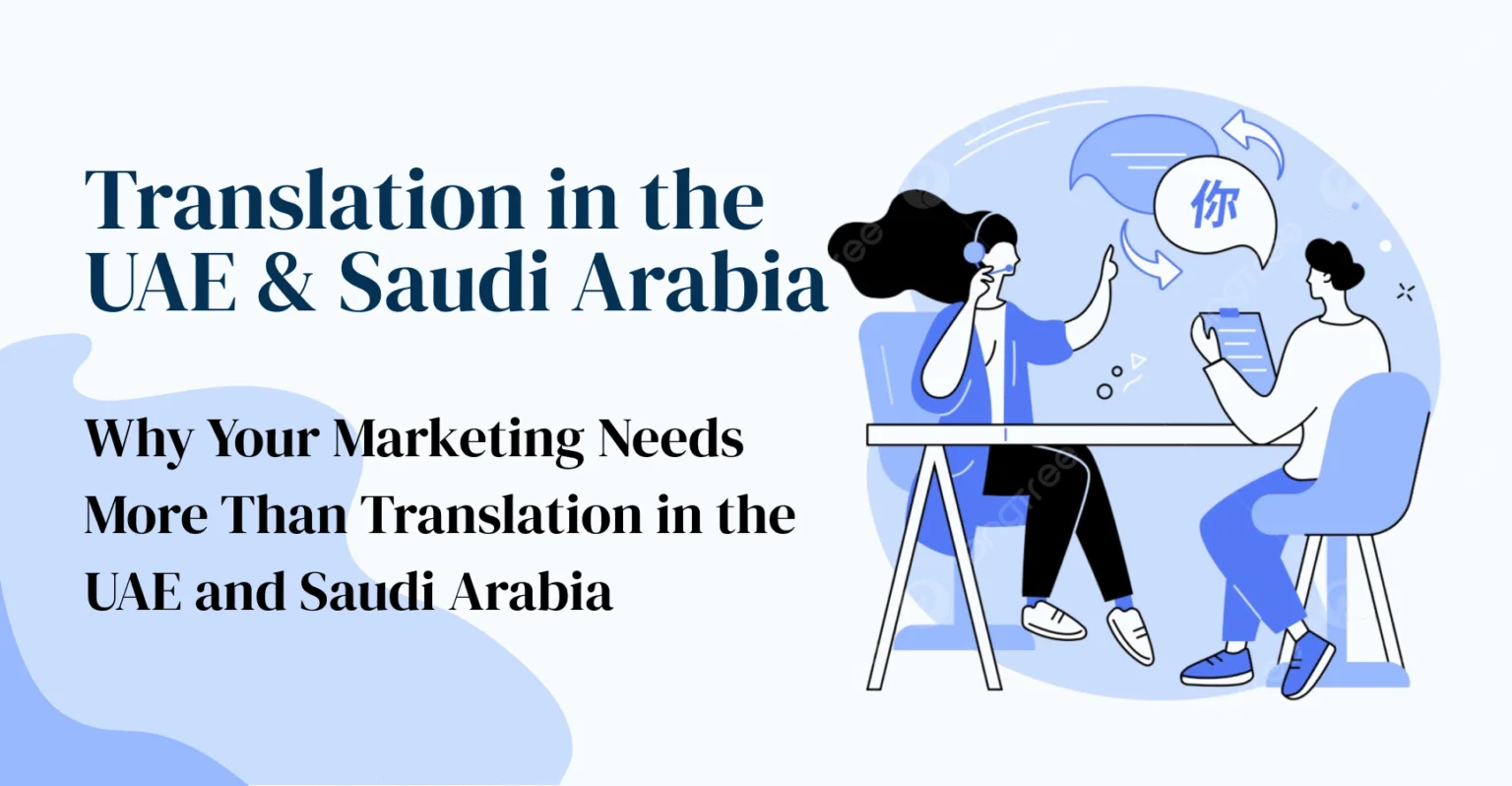The Problem with Direct Translation
We’ve seen this happen too many times: a brand translates their campaign into Arabic, launches it across the GCC, and wonders why it doesn’t connect. The language might be correct, but something’s missing: the cultural layer that makes people actually care about your message.
Take a recent example. A global brand promoted their “family meal deals” across both the UAE and Saudi Arabia using the same translated copy. In the UAE, it worked fine: busy expat families grabbed the convenience angle. But in Saudi Arabia, it barely registered until they shifted focus to multi-generational family traditions. Same product, different cultural meaning.
That’s the difference between translation and transcreation. Translation changes the words. Transcreation changes how the message actually lands in people’s lives.
Cultural Differences That Actually Matter
The UAE and Saudi Arabia share language and religion, but marketing to them requires different approaches. Dubai’s international environment allows for more casual, diverse messaging. Saudi Arabia often calls for formal tone that respects traditional values.
Visual choices carry weight here. Both markets value modesty, but expectations vary by region. Family imagery works everywhere, but multi-generational families resonate especially strongly. Colors matter too: green connects with prosperity and Islamic heritage.
Language style makes a difference. Modern Standard Arabic works broadly, but incorporating natural expressions like “Inshallah” makes content feel more authentic. Just understand that these phrases land differently depending on your audience.
Regulatory landscape varies. The UAE has National Media Council guidelines, while Saudi Arabia operates under Ministry of Media regulations. In Saudi, you also have opportunities to align with Vision 2030 messaging, which can strengthen your positioning.
Building Content That Actually Connects
When it’s done right, people don’t even notice it’s ‘transcreated’. It just feels like it was written for them in the first place.
This requires working with people who actually understand these markets, not just the language. Native Arabic copywriters who know both UAE and Saudi contexts, cultural consultants who can flag potential issues, and regional marketing strategists with real GCC experience.
Timing your campaigns around cultural moments like Ramadan or National Day celebrations can significantly boost engagement compared to generic seasonal pushes.
Why This Investment Pays Off
Brands that take cultural adaptation seriously build stronger relationships in these markets. In the GCC, where family recommendations and word-of-mouth drive purchasing decisions, authenticity isn’t a ‘nice to have.’ It’s the only way to build trust.
The brands that get it right see transcreation as cultural intelligence, not just a box-ticking exercise. They understand that connecting with GCC audiences requires genuine respect for local culture and values, not just language conversion.
Every campaign we’ve seen proves the same point: culturally adapted content outperforms straight translation. In this region, it can be the difference between connecting or being ignored.

